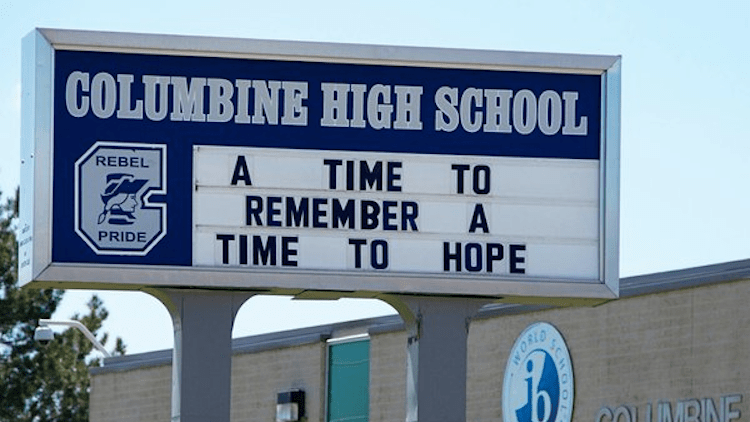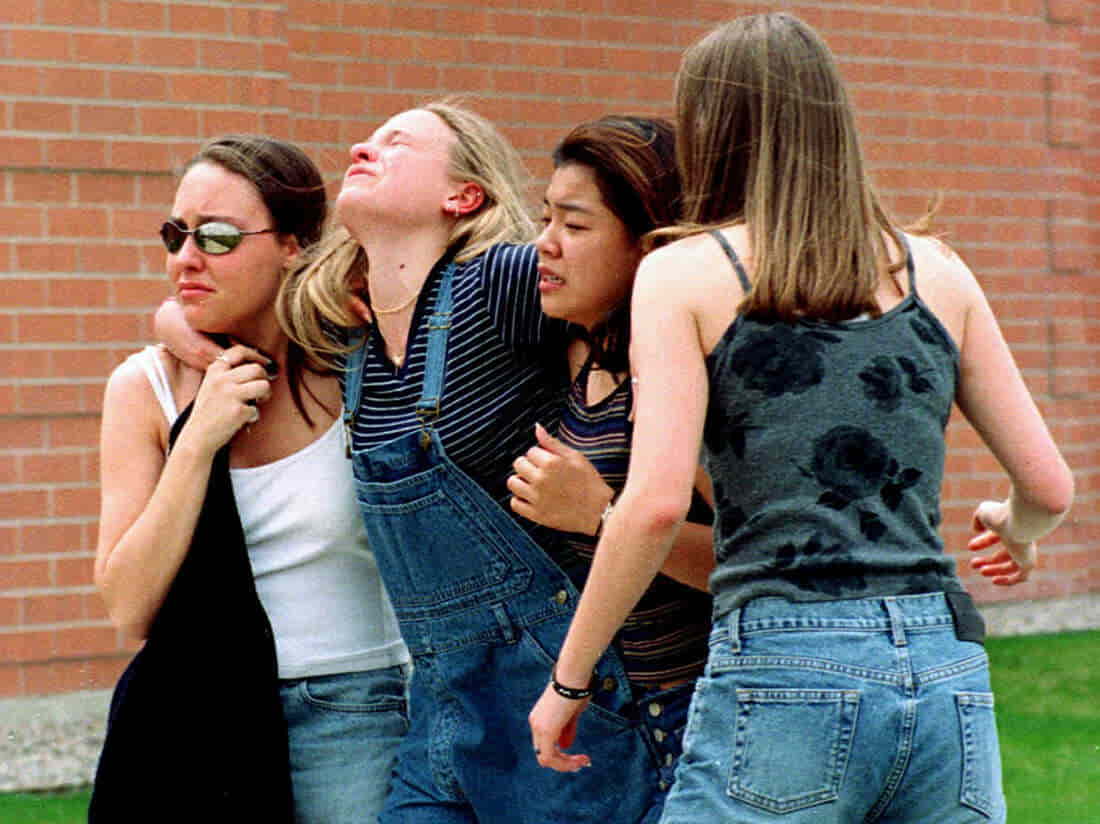
Introduction
On April 20, 1999, a tragic event unfolded at Columbine High School in Littleton, Colorado, that would become one of the darkest chapters in American history. Eric Harris and Dylan Klebold, two students at the school, carried out a calculated attack that left 13 people dead and dozens more injured. The event shocked the nation and caused deep reflection about the safety of educational environments, the role of gun control, and mental health awareness in youth.
The attack not only changed the lives of the victims’ families and the community but also ignited a widespread dialogue across the country about violence in schools, the accessibility of firearms, and the growing concerns of bullying and psychological health in students. The tragedy reverberated across the United States and became a defining moment in the national conversation about the well-being of children and teenagers.
The Events of That Fateful Day
The morning of April 20, 1999, was like any other at Columbine High School. Students arrived for their classes, unaware that in just a few hours, their lives would be forever changed. Eric Harris and Dylan Klebold, who had been planning the attack for over a year, began their day by placing bombs in the school’s cafeteria. Their intention was to cause widespread destruction and harm, but the bombs failed to detonate.
Once their plans for mass casualties in the cafeteria were thwarted, Harris and Klebold resorted to guns. They began shooting students and staff members at random, targeting anyone they saw. Armed with rifles and shotguns, the assailants moved through the school, shooting in hallways and outside areas. They continued the attack for nearly 50 minutes, all while students scrambled to find safety.
The immediate response from law enforcement was swift. Police officers surrounded the school and began to engage in a standoff with the shooters. Tragically, before they could be apprehended, Harris and Klebold took their own lives in the library of the school.
The Impact of the Tragedy
The immediate aftermath of the Columbine shooting was filled with confusion, grief, and heartache. The families of the victims and the community of Littleton, Colorado, were forced to come to terms with the horrifying reality that their lives would never be the same. The shockwave extended far beyond the school’s walls, as the nation watched in disbelief. News outlets reported continuously on the situation, detailing the events in real-time, while citizens across the country mourned the victims.
In the wake of the shooting, there was a collective reassessment of the safety measures in U.S. schools. Security became a major focus, with many schools adopting more stringent procedures. Metal detectors, increased surveillance, and school resource officers became more common in high schools and even middle schools. Policies on bullying were revised, and the importance of addressing mental health issues in young people gained prominence.
On a broader societal level, the Columbine shooting stirred fierce debates about gun control. Advocates for stricter firearm laws argued that the tragedy highlighted the ease with which young individuals could access deadly weapons. Meanwhile, opponents of gun control pointed to the shooters’ psychological problems and the failure of early intervention programs as the root causes of the violence.
The Search for Answers: Why Did This Happen?
In the aftermath of the tragedy, investigators delved into the backgrounds and motivations of Harris and Klebold. The question on everyone’s mind was: What drove these young men to commit such a horrific act? Both were students at Columbine, and though they had appeared outwardly like other high school students, their journals revealed a different story.
Harris, who had shown signs of psychological instability for years, had been diagnosed with depression, while Klebold struggled with feelings of alienation and inadequacy. It became evident that the two were not only deeply troubled but also fixated on their desire for notoriety. Their actions, though planned meticulously, were fueled by resentment toward their classmates and society at large.
While the specifics of their motivations remain somewhat unclear, it is clear that they had a strong desire to exact revenge on those they felt had wronged them. They targeted individuals who they perceived as having bullied them, but they also killed indiscriminately. Their hatred seemed to be more about a desire to wreak havoc and gain infamy rather than any specific grievances with their victims.
In the years following the attack, experts and mental health professionals tried to better understand the psychological factors that contributed to their actions. They pointed to bullying, lack of social connection, and untreated mental health issues as contributing factors. However, the full complexity of the motives remains a difficult puzzle to solve.

The Ripple Effect: Changing How We Think About School Safety
The Columbine shooting marked a turning point in how the United States approached school safety. In its aftermath, there was a surge in policies aimed at improving security and mental health care in schools. As school shootings became a more common and pressing concern, administrators, parents, and lawmakers began pushing for preventative measures.
Many schools adopted zero-tolerance policies towards violence, bullying, and drug use. These policies were designed to create a safer and more structured environment, though they were also met with criticism. Some argued that the policies were too harsh and failed to address the underlying issues that led to violence in the first place.
Mental health became a focal point in the conversation about school safety. In the years following Columbine, many school districts implemented counseling programs, created resources for students experiencing emotional distress, and encouraged greater collaboration between schools and mental health professionals. The hope was that by identifying troubled students early, schools could prevent potential tragedies.
In addition to physical security measures, there was a greater emphasis on creating positive school climates and fostering inclusivity. Anti-bullying programs became a significant part of school curricula, and schools began offering more support for students struggling with depression, anxiety, and social isolation.
Columbine’s Legacy: An Ongoing Conversation
The legacy of the Columbine High School shooting is still felt today. In the years following the attack, many other school shootings followed, leading to a nationwide debate about gun laws, the accessibility of firearms, and how schools should handle violence. The tragedy also sparked a larger conversation about the role of media, video games, and cultural influences in shaping the behaviors of young people.
Since Columbine, there has been significant pressure for lawmakers to implement stricter gun laws to prevent future tragedies. Several states have passed laws requiring background checks for all gun purchases and have restricted access to certain types of firearms. Yet, the country remains divided on how to best handle the issue of gun violence.
Columbine also raised awareness about mental health, bullying, and the need for intervention programs that can identify warning signs of violence in students. Despite the advances made in these areas, many believe there is still more to be done to create safe and supportive environments for students across the nation.
Frequently Asked Questions (FAQ)
Q1: What led to the Columbine High School shooting?
A1: The motives behind the Columbine shooting were complex. Both Harris and Klebold had experienced bullying and struggled with mental health issues. They planned the attack for over a year, with a desire for notoriety and revenge on those they felt had wronged them. Their failure to detonate bombs in the cafeteria led them to use firearms to execute the shooting.
Q2: How many people were killed in the Columbine shooting?
A2: Thirteen people were killed during the Columbine shooting, including 12 students and 1 teacher. Many others were injured, some severely, and the emotional toll on the community and survivors has been lasting.
Q3: What changes occurred in schools after Columbine?
A3: After the shooting, schools across the nation implemented tighter security protocols, such as installing metal detectors and surveillance cameras. There was also a significant focus on mental health, with increased resources for students struggling emotionally and greater emphasis on anti-bullying programs.
Q4: Did the Columbine shooting lead to changes in gun laws?
A4: While the Columbine shooting sparked national debates about gun control, significant changes to federal laws have been slow to materialize. However, some states implemented stricter regulations on firearm purchases in the years following the tragedy.
Q5: What was the lasting impact of the Columbine shooting?
A5: The lasting impact of Columbine has been felt in the national conversation about school safety, gun control, and mental health. It led to changes in how schools handle bullying, violence, and security, as well as a greater focus on addressing the psychological well-being of students.
For more information on school safety and mental health support, visit National Association of School Psychologists.






